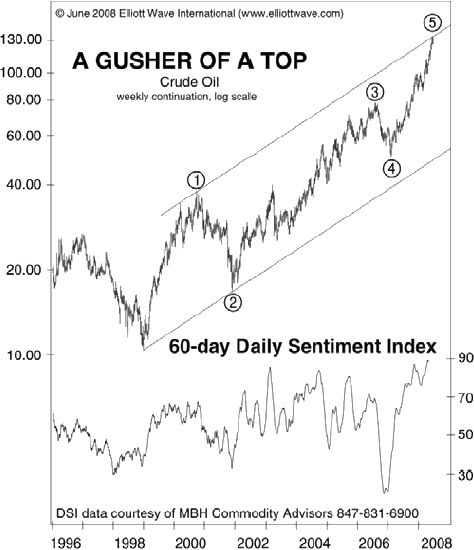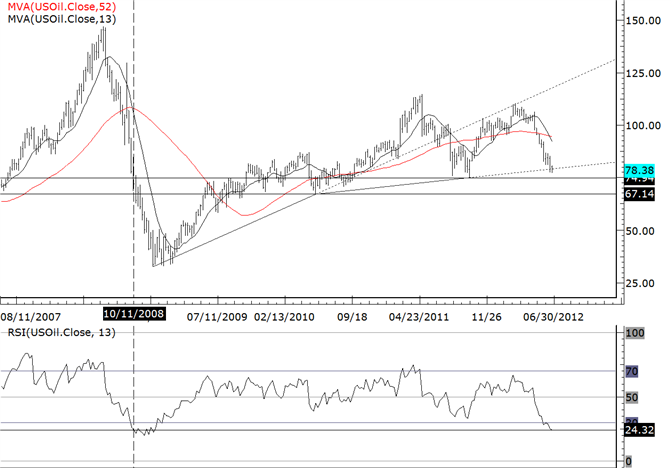
How EWI’s Energy Specialty Service used objective analysis to anticipate the May turnaround in crude oil
One of the biggest flaws of mainstream financial analysis is that it baits traders with a specific fundamental “hook.” And once snared, they are forced to go wherever the reel draws them in, powerless to resist.
- Fibonacci-calculated price support and resistance levels on a chart
- The likely length of developing waves in relation to other waves
- And, whether the trend at hand is impulsive or corrective– as in, here to stay or not.


Let’s turn to a real-world example with the recent price action in crude oil. See, on May 2, both the mainstream experts AND EWI’s Energy Specialty Service were near-term bullish on crude oil. Herein, however, lies the difference:

- The fundamental camp presents its case with this May 2 news story: “Crude oil futures start May by bouncing to a five-week high as US manufacturing growth in April hit the highest in 10 months, boosting the demand outlook for oil.”
- That same day, May 2, EWI’s Energy Specialty Service revealed how its “preferred” bullish Elliott wave count for crude oil hinged on this crucial action: “Crude needs to continue higher to support the idea that the next leg of the advance is underway. At this point, trade below 101.82 won’t bode well for the idea that the decline from the early March peak is done… and an even longer decline would seem likely.”












